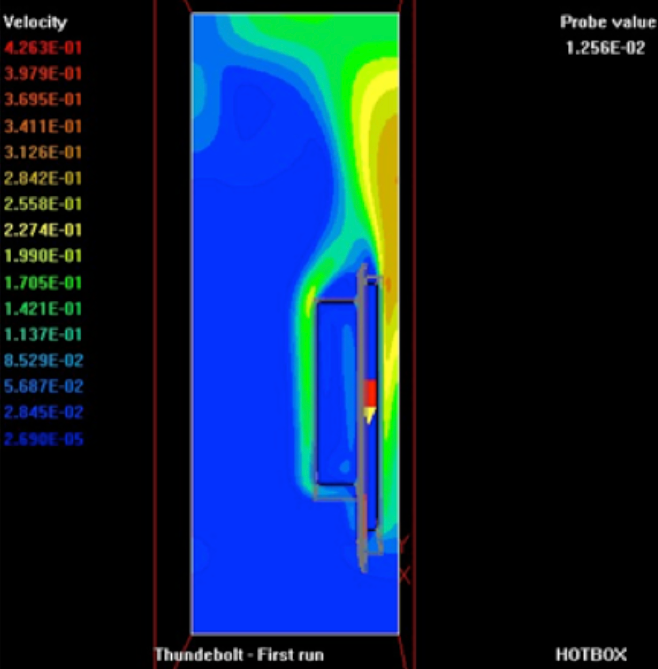Multiple analysis methods are utilized and often enhanced with simulations. Analysis is an early method of identifying electronic and mechanical design implementations and components that may not meet hardware requirements. By selecting components and resolving design issues identified during analysis (and prior to hardware implementation) we eliminate the need to repeat build and verification steps with new components or countermeasures.

WCA
Worst-case analysis (WCA) encompasses mechanical dimensional stack-up, and modeling thermal extremes. When applied to electronic circuit design, it establishes the certainty the circuit will function when the characteristics of the base components vary. All components have initial tolerances around their nominal value; this variance widens over time and with temperature changes. Read more …
Simulation
Simulation is used to model ECU thermal performance, and circuit simulations model the dynamic behavior of interfaces and power supplies. Worst-case parameters from WCA are fed into the simulators to ensure that dynamic performance meets design goals despite component value shifts. Recent Dana projects have utilized these simulation tools: Read more …
FMEDA
Failure modes, effects, and diagnostic analysis (FMEDA) is used to determine fault metrics for safety related hardware. FMEDA provides insight into the failure rate of safety related electrical components/circuits to show evidence that the desired ASIL rating is met for ISO 26262 projects. Read more …
DFMEA
Design Failure Mode and Effects Analysis (DFMEA) is used to identify and mitigate risk. After the system level DFMEA is completed and the detailed hardware design is underway, a hardware level DFMEA is done. The hardware DFMEA uses a perspective of circuit failures internal to the ECU and the effects that will have on the system given the system level DFMEA. This ensures the detailed design considers the best way to make a reliable and safe product for our customers. Read more …
FTA
Fault Tree Analysis (FTA) is a deductive analysis that begins with a general conclusion, then attempts to determine the specific causes of the conclusion by constructing a logic diagram call a fault tree. This is often referred to as a top-down approach. This differs from the DFMEA bottom-up approach that considers each hardware part and the effects on the top-level system of a failure at that low level. The technique is similar to the system level FTA but focuses on smaller architectural electronic blocks.
Thermal
Thermal analysis is critical in determining if excessive temperatures are being reached that can degrade component life. In some cases, high temperatures can result in the short-term destruction of a component. Analysis could indicate that the airflow a component experiences may need to be modified to maintain a temperature compatible with long term life. The selection of the material used for the component enclosure and its cost can be driven by thermal analysis. Armed with this analysis, system and component changes can be made to alleviate or avoid detrimental temperatures.
Vibration
Finite Element Analysis (FEA) methods are useful to provide confidence that the subject design is capable of withstanding the vibration profile specified for the hardware component. Certain parts of the design such as accelerometers or gyros may be susceptible to mechanical fatigue or performance degradation at particular resonant frequencies. Read more …
Tolerance Stack-Up
Tolerance stack-up analysis provides consideration for the assembly of the individual hardware components into a fully functional ECU. All critical interfaces are analyzed to ensure proper assembly fit and functionality while considering the full distribution of all component tolerances. Stack-up analysis is key to providing confidence that a design can be manufactured repeatedly with high yield rates.
Dana applied stack-up analysis to enhance design for manufacturing reviews. This type of part-to-part interface analysis is not available with your typical manufacturing source. Typical interface reviews for manufacturability consider interferences with nominal part tolerance. A stack-up analysis considers the distribution of tolerances associated with component dimensions and assembly/placement/location capabilities.
Finite Element Analysis
Finite Element Analysis (FEA) methods are useful to provide confidence that the subject design can withstand the various environmental profiles specified for the hardware component. FEA can detect potential design weaknesses and point to design changes so that issues are less likely to occur in the actual assembled hardware and avoid costly iterative hardware builds.
